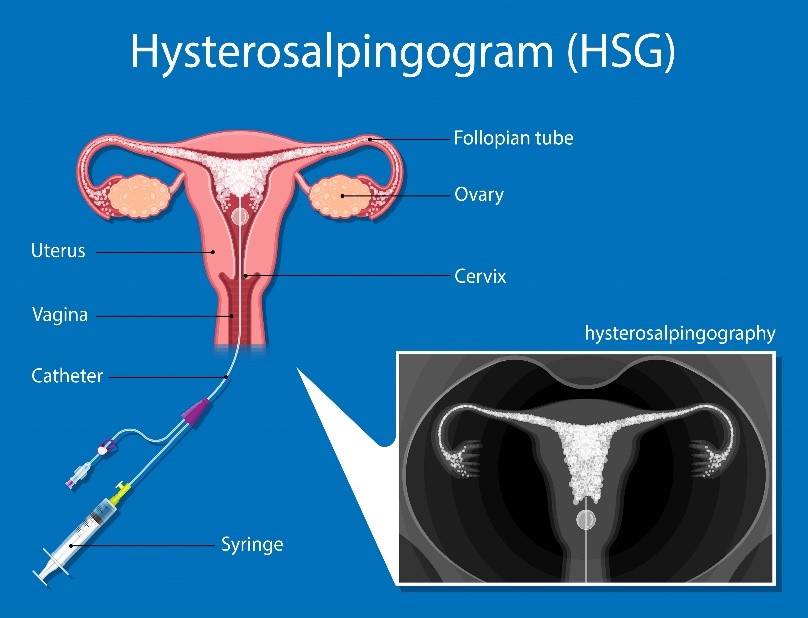HSG (Hysterosalpingography)
A Hysterosalpingography, more commonly known as an HSG test, is an x-ray procedure women can use to determine whether the fallopian tubes are open or block. An HSG test can give us important information to detect blockage. When a fallopian tube is blocked, this inhibits the sperm from reaching the egg needed for fertilization during normal conception.
HSG tests are an outpatient procedure and does not require anaesthesia .After the HSG test, you can immediately return to normal activities, although you may experience mild or moderate uterine cramping for about 5-10 minutes.
The entire procedure usually takes less than 10 minutes.
When should HSG be done
HSG is performed within a week of the end of a woman’s menstruation around 8 to 10th day of menses to ensure that she is not pregnant and to avoid the risk
During an HSG procedure using C-Arm Fluoroscopic Imaging System, contrast dye is injected into the uterus and tubes. As the dye is being passed into the uterus, x-ray pictures are taken. As the contrast dye enters the tubes, it outlines the length of the tubes and spills out their ends if they are open. Abnormalities inside the uterine cavity may also be detected like uterine fibroids, endometrial polyps, adhesions, anomalies and tumours. when the fluid movement is disrupted by the abnormality. HSG helps in diagnosing fallopian tube blockage, tubal ligation, reverse sterilisation.
If the HSG shows that your tubes are blocked, you can immediately discuss this with our IVF specialists at the time of your visit. Our doctors will likely recommend either a surgical procedure to directly view the tubes (laparoscopy) and attempt to clear the blockage or to bypass the tubes and perform in vitro fertilization (IVF). The fertility doctors at Dreamzzz IVF will provide you with all the information and options if your HSG indicates that your tubes are blocked.

